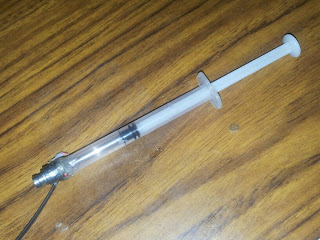vwinter
Headphoneus Supremus
- Joined
- Oct 6, 2010
- Posts
- 4,651
- Likes
- 405
I read those quotes, wasn't entirely sure if the Tenore's setup was the same as the Sony as for the Tenore the vent is mention and the foam is covering the vent. And this statement.
If you look at Rin's sony. He's just changing the back area. Not sure where foam comes into play.

Gotcha.
What's actually interesting to me about all this is you have about three variables, a back vent (if any), volume of the rear cavity (maybe shape too but I don't know how much effect that would have), and dampening material.
Say you accurately vary the vent size and the dampening material to create a net zero change in airflow behind the driver, while amplitude of the low end might (probably will) stay the same, how would that change the perceived response of the low end?
























